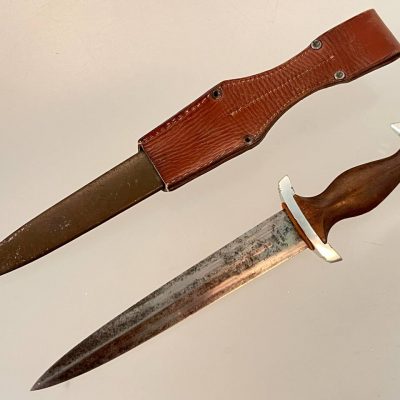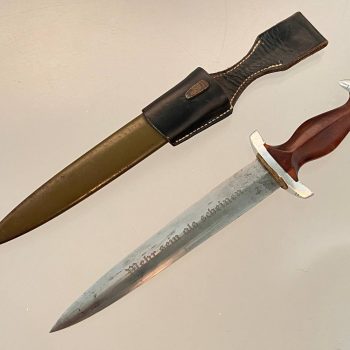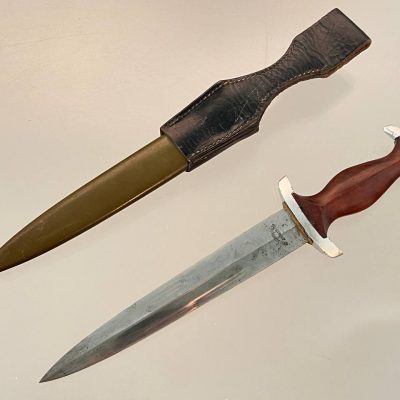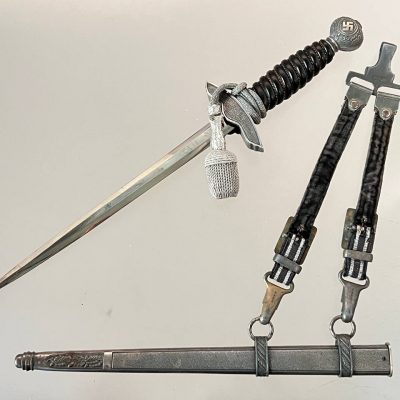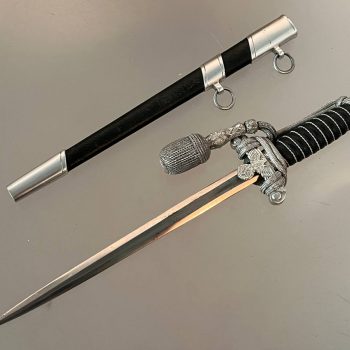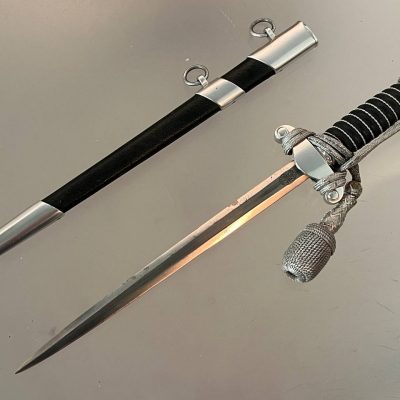Showing all 4 results
Filters-
NPEA dagger for students/graduates of the National Political Education Institute (NPEA) Naumburg. (Lot: 582)
Starting bid: $ 7,500Blade marked “Karl Burgsmüller Berlin-Charlottenburg 5,” with some minor spots; the motto remains crisp and clear. Aluminum fittings, crossguard stamped “N448.” Brown wooden grip with slight pressure marks. Steel scabbard painted olive-green, showing light traces of corrosion. Comes with the original sidearm hanger. A worn piece, but in good overall condition. Rare.
-
NPEA dagger for course participants. (Lot: 581)
Starting bid: $ 5,700Apart from a few age spots, the blade is clean, bearing the motto “Mehr sein als scheinen” (“To be more than to appear”) and the maker/supplier mark “Karl Burgsmüller, Berlin.” Pommel and crossguard are made of aluminum; brown wooden grip shows a repair area, stress cracks, and small chips above the crossguard. Olive-green painted scabbard retains about 97% of its original finish, complete with original leather hanger, which has the owner’s name “M.H. Möller” scratched on the reverse. A very well-preserved NPEA dagger.
-
Wehrmacht Luftwaffe (WL) Dagger for Officers. (Lot: 583)
Starting bid: $ 4,130Extremely rare version with a black plastic grip. Intact wire wrapping; crossguard and pommel made of aluminum, with traces of original gilding still visible on the sunwheel swastikas. Clean blade by “Robert Klaas, Solingen”; scabbard with no significant damage, slightly toned. Complete with portepee and hanger. Worn example.
-
Reich Finance Administration dagger for Customs Officers. (Lot: 584)
Starting bid: $ 2,850Clean blade by the maker “E.&F. Hörster Solingen”, aluminum fittings, dark green leather-covered grip with intact wire wrapping, also dark green leather-covered scabbard with aluminum fittings, no visible damage, with a simple Wehrmacht portepee. A very well-preserved dagger showing only minor signs of age.

